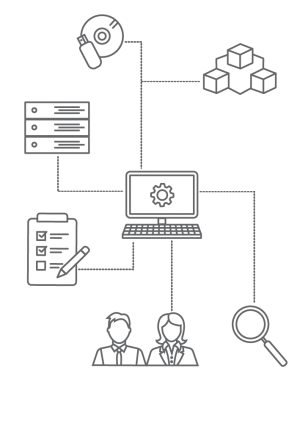We have seen a number of developments to the Research and Development Tax Incentive (R&DTI) during the 2021 income year. 
This includes an increase in the net R&D tax benefit for some claimants, updates to AusIndustry guidance and a number of Administrative Appeals Tribunal (AAT) and Federal Court decisions.
Below is a summary of the key updates to the R&D Tax Incentive during the 2021 income year and what to expect as the 2022 income year approaches.
2021 SUMMARY
Increased Benefits
As a result of the reduction in the company tax rate for base rate entities to 26% for the 2021 income year, the net R&D tax benefit for claimants of the refundable R&D tax offset has increased from 16% to 17.5%.
For claimants with an aggregated turnover of between $20 and $50 million, the net R&D tax benefit from the non-refundable R&D tax offset increased from 11% to 12.5%.
There were no changes to the net R&D tax benefit for claimants with an aggregated turnover of over $50 million, it remains at 8.5%.
A temporary measure brought in due to COVID-19 allows claimants to fully expense new assets held, used or installed ready for use between 6 October 2020 until 30 June 2023.
Where tangible depreciating assets are entirely used for an R&D purpose, the full value of these assets is likely able to be included in R&D claims.
Note, R&D deductions will be specifically excluded where a claimant has accessed the small business instant asset write-off provisions.
Updated AusIndustry Guidance
AusIndustry has updated and rebranded the R&D content on its website to assist claimants in assessing the R&D eligibility of activities.
Included within these updates, case study examples are now provided. According to AusIndustry, these updates reflect recent Federal Court and AAT decisions including the Federal Court’s 2019 Moreton Resources Ltd v Innovation and Science Australia FCAFC 120 decision.
The updated material includes a refreshed guide to interpretation, integrity framework and compliance reviews of the R&DTI program and sectorial guidance.
As part of sectorial guidance material, AusIndustry has released a draft copy of the refreshed guidance for software development activities.
The key differences between this draft software development guide, compared to the previous guide, is that the listed examples of activities that AusIndustry considers to be ineligible as core R&D activities have been removed and references the Frascati manual for defining R&D activities are also removed.
A case study is now provided to assist claimants in explaining eligibility requirements within a software development context for the R&DTI and the draft guide also provides examples of evidence that can be used to support R&D eligibility.
Recent Case Decisions
The recent decision in the Full Federal Court of Australia, Coal of Queensland Pty Ltd v Innovation and Science Australia [2021] FCAFC 54 reiterated the requirement for documentation as evidence of undertaking R&D activities.
The Full Federal Court agreed with the AAT’s observation that there were “no R&D plans or documentation to demonstrate the activities were carried out by applying a systematic progression of work based on the principles of established science; or that they proceeded from the purported hypothesis to experiment, observation and evaluation, leading to logical conclusions”.
An important outcome of this case is the need for claimants of the R&DTI to be aware that there may be a dual purpose for an R&D activity where activities may be undertaken for the development of new knowledge and, at the same time, the activity falls within the specific Core R&D Activity exclusions.
Potentially, this means that the Core R&D Activity exclusions could extend to the entire activity.
The AAT in PKWK and Innovation and Science Australia [2021] AATA 706 overturned Innovation and Science Australia’s (ISA) decision regarding the eligibility of R&D activities as Core R&D Activities and Supporting R&D Activities.
The AAT held the purpose of activities to generate new knowledge is capable of coexisting with alternative purposes, including those of a commercial manner. In this case, a commercial scale MSW treatment plant was designed and constructed at the same time as having a purpose of generating new knowledge.
Additionally, the AAT agreed that errors in work performed does not preclude it from having a systematic progression of work that proceeds from hypothesis to experiment, observation and evaluation, leading to logical conclusions.
The need for claimants to have contemporaneous documentation to a reasonable level of detail was also reaffirmed, with the AAT acknowledging:
- In a commercial setting, the level of record-keeping would not be as detailed or comprehensive in comparison to a University research setting.
- The purpose of R&D activities can be established through oral evidence in court.
- There are “times best engineering practices, such as six decimal place accuracy, will not always be achieved in commercial environments”.
In summary
Recent cases suggest ISA are actively applying the Core R&D Activity exclusions and these exclusions may apply even if the activities are conducted for the purposes of generating new knowledge. Maintaining sufficient documentation to support and substantiate R&D eligibility requirements is essential and claimants must consider all eligibility requirements and ensure activities are properly defined and progressively recorded.
New AusIndustry R&D Portal
For 2021 R&D claimants AusIndustry will introduce the R&DTI customer portal for the lodgement of the R&D Registration.
The new portal will be available from 5 July 2021 and all R&DTI applications must be submitted through this portal.
As part of the new online registration process, Core R&D Activities are broken down into their key eligibility criteria.
Additional details are requested including details of evidence recorded to substantiate activities, details of the investigations undertaken in establishing knowledge gaps and existing knowledge as well as details of any future Core R&D Activities.
It is important to note character limits of between 1,000-4,000 exist and there is no ability to provide attachments or other supporting documents.
Therefore, claimants must concisely describe how their R&D meets each of the eligibility criteria.
CHECKLIST FOR 30 JUNE 2021
As we approach the end of the 2021 income year, prior to the 30 June year end, we recommend the following:
- Ensure you have set up the AusIndustry R&D customer portal. In order to prepare the R&D claim for 2021, claimants will need to set up the AusIndustry R&D Customer portal.This will require setting up your myGovID and linking it to the Australian Taxation Office's (ATO) Relationship Authorisation Management (RAM) system. If you are utilising an R&D consultant, you will also need to add their details to the R&D customer portal.
- Review all documentation and systems to ensure R&D activities have been contemporaneously recorded and aligns with eligibility requirements of the R&DTI. You need to also examine expenditure records including timesheets to ensure all R&D expenditure has been recorded. This is necessary to ensure all R&D expenditure can be referenced back and is incurred “on” specific R&D activities undertaken.
- Examine any associate relationships and ensure payment of any outstanding amounts incurred to associates prior to the 30 June.
- If future R&D activities are being undertaken overseas or you need to submit an Overseas Finding application. This must be lodged by 30 June 2021 in order to claim overseas R&D costs incurred during the 2021 income year.
If you have any concerns or questions, contact RSM immediately.
THE YEAR AHEAD
From 1 July 2021, the annual R&D expenditure threshold cap has been increased from $100 million to $150 million.
In addition, for most claimants, the net benefit of the program will increase from 1 July 2021. For the 2022 income year and future income years, where aggregated turnover is less than $20 million, the net R&D tax benefit for claimants of the refundable tax offset will increase to 18.5%.
There are significant changes for claimants that are eligible for the non-refundable R&D tax offset.
From 1 July 2021, the R&D tax offset rate will be based on the claimant’s corporate tax rate plus an R&D premium dependant on the claimant’s R&D intensity.
R&D intensity is calculated as the proportion of the entity’s R&D expenditure over total expenses for the income year.
The R&D premium amount applied is based on a two-tiered system, as follows:
- For R&D expenditure representing up to and including 2% of the entity’s total expenses, the premium is 8.5%; and
- For R&D expenditure representing greater than 2% of the entity’s total expenses, the premium is 16.5%.
The newly legislated uniform clawback rule will commence from 1 July 2021. The uniform clawback rule consolidates existing integrity provisions into a single calculation for recoupment amounts, feedstock adjustments and balancing adjustments for any assets held and used for R&D purposes.
This is achieved by a calculation which will give rise to an amount of assessable income equal to the grossed-up value of the incentive component of associated amounts of the R&D tax offset.
As noted above, claimants can fully expense new assets first held, first used or installed ready for use between 6 October 2020 until 30 June 2023.
Where tangible depreciating assets are entirely used for an R&D purpose, the full value of these assets is likely able to be included in R&D claims.
Note, R&D deductions will be specifically excluded where a claimant has accessed the small business instant asset write-off provisions.
Some changes have also been introduced to improve the administration and transparency of the R&D Tax Incentive.
After a period of two years following the end of each financial year, the ATO will be required to publish information about R&D entities, including the R&D entities name and the amount claimed.
Additionally, Innovation and Science Australia will be allowed to make binding determinations in relation to its position on the applications of its functions and its interpretation of the legislation. A further change is that the Commissioner may deny a tax benefit in the form of a notional deduction that an R&D entity seeks to obtain from a tax avoidance scheme.
The Board of Taxation has recently announced that it will be reviewing the “Dual-agency administration model” of the R&DTI. The findings of this review will be reported back to Government by 30 November 2021.
If you have any questions, please contact your local R&D expert today by clicking here.

